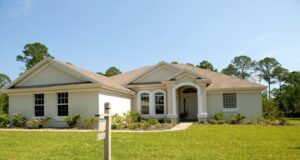Nine Maryland Properties to Receive Historic Preservation Tax CreditsNine Maryland Properties to Receive Historic Preservation Tax Credits
ELLICOTT CITY, MD – December 11, 2014 – (RealEstateRama) — Today, state officials announced $10 million in state tax credits that will fund nine historic restoration projects across Maryland. The tax credit will infuse positive change and jobs to communities from Cumberland to Cambridge.
By offsetting the costs of historic renovation, the Sustainable Communities Tax Credit Program helps owners of historic structures preserve some of Maryland’s best places as well as provides an economic boost to their communities. The awards were announced in the Old Post Office in Ellicott City, near the site of a tax credit project.
“This tax credit is one part of our efforts to innovate, educate, and rebuild Maryland by repurposing empty buildings into active, vibrant sites for new businesses,” said Governor O’Malley. “The Sustainable Communities Tax Credit is one of the most effective investment tools for strengthening our green economy, revitalizing critical historical sites, and creating family-supporting jobs for more Marylanders across our State.”
Using figures from the Abell Foundation, Maryland Historical Trust (MHT) estimates that the program has helped create more than 26,000 jobs through construction and new uses of these structures. In 2015, MHT estimates that the tax credit will create 894 jobs.
The Sustainable Communities Tax Credit program, administered by MHT, part of the Maryland Department of Planning (MDP), has invested close to $360 million since it began in 1996. The investments have helped restore more than 3,995 residential and 616 commercial historic structures, preserving buildings with a sense of place that contribute to the uniqueness and charm of Maryland towns and cities.
Part of the 2010 Sustainable Communities Act, the tax credit program promotes community revitalization and strengthens the mutual goals of the Maryland Departments of Planning and Housing and Community Development.
The $10 million investment will leverage private investment of about $76.7 million in the following projects:
- Footer’s Dye Works, Cumberland: Conversion of an industrial factory to commercial restaurant and apartment use. Credit amount: $1,990,552; Est. project cost: $7,962,208.
- Eastern Pumping Station/Baltimore Food Hub, Baltimore: Conversion of former pumping station to a mixed use food center business incubator. Credit amount: $3 million; Est. project cost: $15 million.
- Fells Point Recreation Pier, Baltimore: Conversion of the former municipal pier building for use as a hotel and restaurant facility. Credit amount: $3 million; Est. project cost: $39.8 million.
- Florence Crittenton Home, Baltimore: Conversion of former mill owner’s mansion/social services campus for use as rental apartments. Credit amount: $520,000; Est. project cost: $2.6 million.
- Eastwick Motor Company, Baltimore: Conversion of a 1914 Ford dealership for use as an arts organization center and restaurant. Credit amount: $453,968; Est. project cost: $6.1 million.
- Carrollton Hall, Ellicott City: Restoration of the 1832 mansion house for use as community meeting space and museum. Credit amount: $780,480; Est. project cost: $3.9 million.
- Taylor’s Furniture Store, Ellicott City: Rehabilitation of a retail and residential building for use as restaurant and office space. Credit amount: $150,000; Est. project cost: $750,000.
- Doughoregan Manor Work House, Ellicott City: Rehabilitation of a 1760s plantation building for use as rental residential housing. Credit amount: $60,000; Est. project cost: $300,000.
- 511 Poplar Street, Cambridge: Rehabilitation of commercial building for retail and rental residential use. Credit amount: $45,000; Est. project cost: $225,000.
















